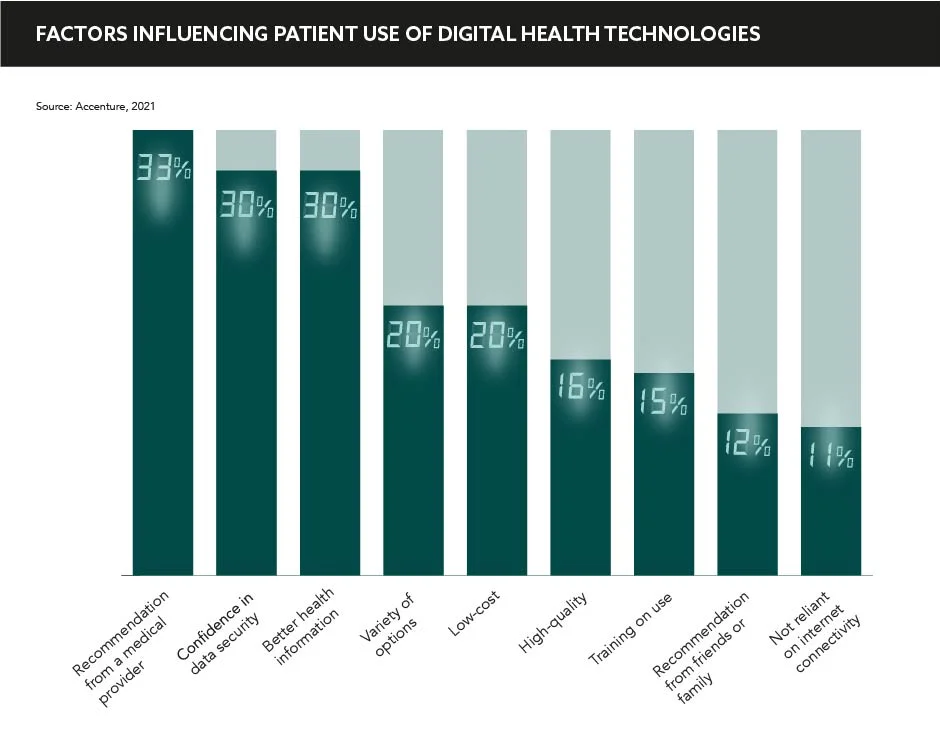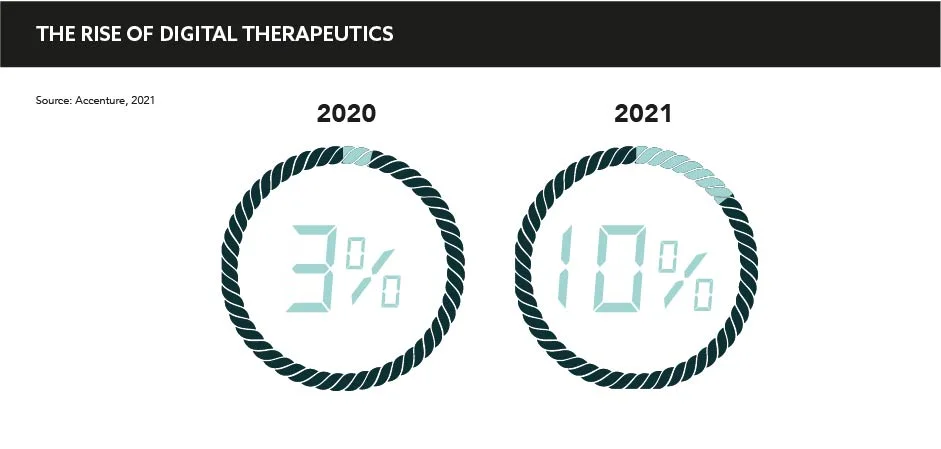As the pharmaceutical industry embraces digital transformation, new technologies have the potential to sink or swim. How can the industry ensure it’s backing the most effective innovations and not getting stuck in dead ends?
Words by Cheyenne Eugene
A need to navigate the rapids of COVID-19 forced the pharmaceutical industry to fashion digital solutions quickly. A slow, incremental evolution would not suffice, and pharma took to digital transformation like a fish to water.
However, as the currents of COVID-19 begin to subside, does the pharma industry need to be more cautious and considered in its advancements as a sector? While pharma has previously been criticised for its digital inertia, can better uptake be yielded from cautious innovation?
Times are changing
“The days of pharma where we used to build a solution and push it out there are over,” says Emma Höglund, Head of Commercial Excellence and Digital Strategy, UK, Novartis, speaking at ‘Reuters Events: Pharma 2021’. “Even when you think you have the solution and answer, go back.” Höglund encourages regularly revisiting the initial problem. As in such a fast-paced healthcare environment, patients’ needs are ever evolving.
Fern Miller, Global Chief Strategy Officer, Native Design, supports this, explaining at the Reuters event that pharma has an ongoing battle with adherence. “In 2003, the World Health Organization estimated that 50% of those diagnosed with chronic conditions would not stay on their programme. And that has not changed in 17 years.”
Similarly, many medical health apps created during the pandemic are also failing to maintain patient adherence. “For all the people downloading [these apps], only 20% will be using it on day one. By the end of week one, that will have fallen to 7%, and by the end of the first month to 3%,” says Miller.
When medication is used in isolation, it can become a sinking ship, and, while apps can help, they still have a way to go in improving adherence more generally. As Miller states: “It’s time we understood non-adherence as not just a failure of the patients but as poor design.”
It’s time we understood non-adherence as not just a failure of the patients but as poor design
Also speaking at the Reuters event, Catalina Cernica, CEO, Health & Happiness Foundation, says: “Things that don’t work will [ultimately] fail and, unfortunately, sometimes they fail too late.” When uptake and adherence are low, it can suggest that something failed during the concept and design phases.
Good design does not always correlate with the newest, shiniest technology. “We must avoid starting from scratch and reinventing the wheel for ourselves, our customers and end users. What is there already that we can build on?” advises Höglund.
Innovate selectively
The introduction of innovative technology can leave often unprimed markets and healthcare systems swimming upstream. “We often risk fragmenting healthcare even more when we come with solutions if they are not joined up with existing things,” she warns.
Chris Easton, Senior Director Global Commercial Lead, Personalized Health, Innovation and Hematology, Takeda, agrees. Also speaking at the Reuters event, he says: “I can think of innovative solutions that have been proposed to healthcare bodies and the reality was that they loved the idea, but they run on a binary system or in contrast and so the two just would not connect.”
The ability for these systems to receive a service or solution and then manage it in a way that gives optimum effect, doesn’t always exist. “If you look at that from a global scale and take into account market archetypes, different standards of available technology, or how data is managed at local levels… There is no silver bullet, so we have to have multiple solutions to a problem and different levels of tech at the same time,” concludes Easton.
Calling back to his own experience, Easton says: “During the early days, we tend to explore lots of options at a technology level, then we narrow down very quickly. We put all our eggs in one basket, and it becomes very hard to say this is not working.”
Considering why there is a hesitancy around calling out failure and voicing concern early on, he asks whether this is “because a lot of our projects are associated with or funded by brands and, therefore, there is an expectation of delivery”.
Easton suggests that digital health solution projects are disassociated with brands at the concept stage. “If we do it with a brand in mind, then they are waiting for a solution, so we tend to keep going, rather than being willing to fail fast and learn, and use that as a springboard to version B,” he explains.
How to get it right?
Rapid digital transformation washed over the pharma industry as a means of survival, but as the tide turns back to growth and innovation, how can the industry innovate at the right pace and in the right places? “Sometimes in pharma, we become the people who have a hammer and are looking for nails,” says Cernica.
We must avoid starting from scratch and reinventing the wheel for ourselves, our customers and end users
Keeping the goal in mind, Easton says: “We always talk about our North Star. What is it that we want to achieve? Where is it that we want to go?” In pharma’s case, this destination is value for the patient. “Ultimately, we want to think about what we can bring to this space that could bring joy, rather than just directions and warnings,” urges Miller.
Cernica sees this as a uniting and common goal. “Having this map of value gives everyone a common language with which to start a wider dialogue,” she says. But Easton takes this one step further, branching into new outcome avenues, saying: “If you include concepts like health and happiness and where digital health solutions fit in, and holistic care of the patient, then you start to get into outcome-plus.”
The industry must innovate in a way that provides value for patients and healthcare systems and facilitates high uptake and adoption. “You have to do little and often; do not try to be disruptive at the beginning,” suggests Easton. “Maybe incremental is a nice way to move because it starts to show people the value, gives you an understanding of how to work with ideation through to commercialisation in a manageable way and then helps you to build on it from there,” he concludes.
Rather than diving headfirst into tumultuous waters, pharma must be the captain of its own ship and cautiously scan the waves ahead to ensure innovative technologies can stay afloat and truly provide value for all stakeholders.








